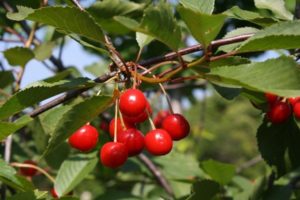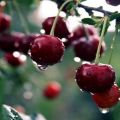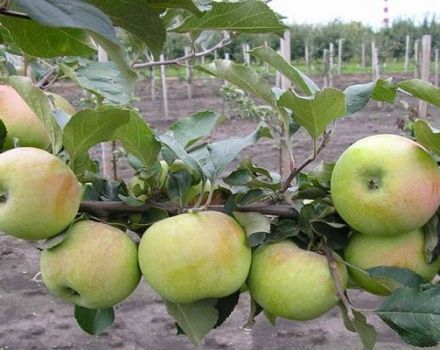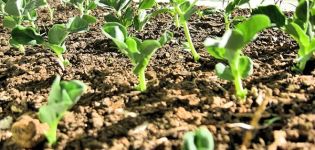Description of the Assol cherry variety, fruiting characteristics and care rules
Cherries are considered one of the most common horticultural crops grown by many gardeners. Assol cherries are often planted in summer cottages, which are valued for their delicious fruits, unpretentious care and high yield.
Description of the variety
The description of the variety must be studied by every vegetable grower who is going to grow it. This will help you become familiar with the characteristics of cherries.
Assol belongs to medium-sized varieties of cherries that grow up to one and a half meters in height. Due to the fact that the trees are not very tall, it is quite easy to cut shoots and harvest. Trees have a non-thickened pyramidal crown.
The peculiarities of the plant include the fact that the variety is self-fertile, and therefore gardeners do not have to waste time on manual pollination.
The positive qualities of the variety include the following:
- resistance to climatic changes and temperature extremes;
- resistance to many diseases that often infest cherry seedlings;
- high yield, due to which more than 10 kg of berries are harvested from one tree;
- self-fertility.
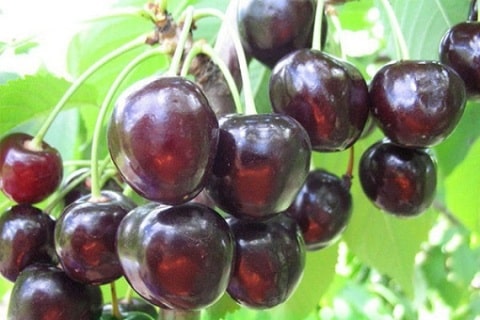
Characteristic
Assol cherry variety begins to bloom in the second half of May, after which cherries begin to form on the trees. The harvest has time to fully ripen by the end of June or the beginning of July. Ripe cherries are not very large, as their weight is only 2-3 grams.
However, this does not in any way affect the yield, since 12-14 kg of the crop can be harvested from one tree.
Assoli's taste is unique, as the berries combine sweetness and acidity. The harvested crop can be considered universal, since it is used to create wines, gravies, liqueurs, preserves and jams. Also cherries are often used in the manufacture of blanks with other berries.
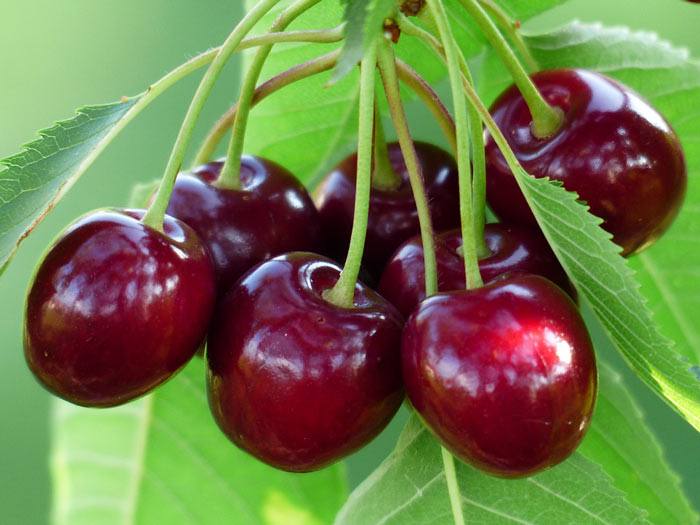
The first harvest of ripe cherries is carried out three years after the seedlings are planted in the garden. At first, the yield will not be too high, but in 1-2 years it will increase significantly. Planted trees grow for about 15-17 years, after which their fruiting worsens.
Planting and caring for a tree
It is necessary to familiarize yourself with the peculiarities of planting Assol in the garden in advance, so that the seedling will start and grow normally.
Planting
Seedlings are planted in spring, when the soil is warmed up to 8-10 degrees. When choosing seedlings, pay attention to the following parameters:
- height - 1-2 meters;
- root length - 10-12 cm;
- age - from one year;
- the number of shoots is not less than 10 pieces.
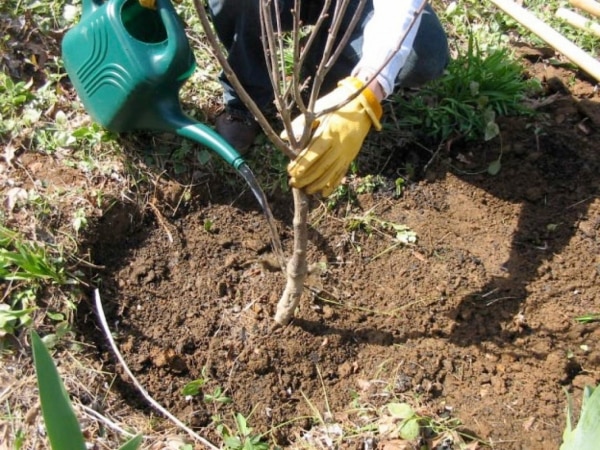
Having chosen the seedlings, you can start planting.A planting hole is made in the ground with a depth of about 40-45 cm, in which the seedling will sit. Then cherries are placed in it, sprinkled with earth and watered with water.
Care
Assol is classified as a drought-resistant plant, but this does not mean that it does not need watering. It is recommended to moisten the soil 2-4 times a month so that the root system has enough moisture for the growth and formation of fruits. In order for the liquid to get to the roots faster, special trenches for water are dug near the plant. For one watering, no more than two ten-liter buckets of liquid are consumed. To keep moisture in the soil longer, after watering the trench is covered with straw or dried grass.

Also, the plant is fed once a month with phosphorus fertilizers and wood ash.
Preparing for winter
Before the onset of winter cold, cherries must be prepared so that they can withstand frosts without a problem. To do this, in the second half of November, all excess shoots are cut off and the soil is mulched near the trunk so that the soil near the roots freezes less. When pruning trees, shoots are removed, the length of which is more than 50-55 cm. Having finished with pruning branches, the tree trunk is covered with a lime liquid and watered 2-3 times.
Conclusion
Fans of drought-resistant varieties of cherries prefer to grow the Assol variety. Before planting, it is recommended to carefully study the description of this plant and the features of its cultivation.
